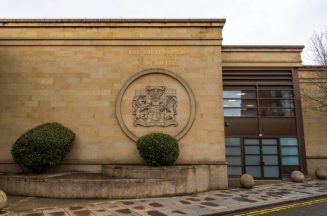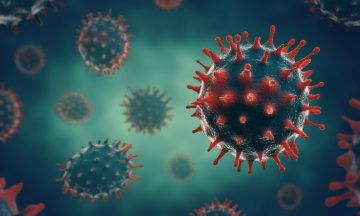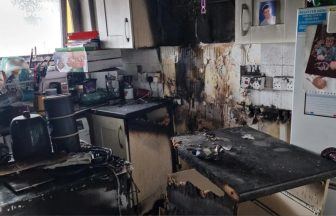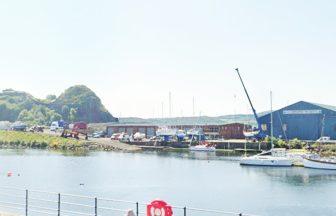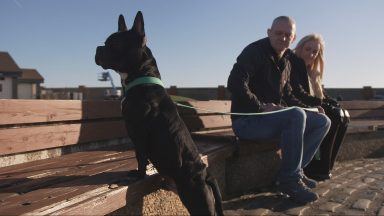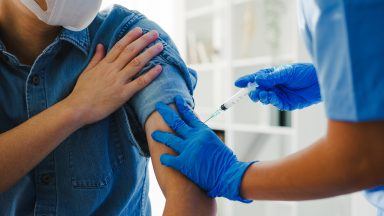Recent daily coronavirus case figures in Scotland have not made for pleasant reading.
Looking at the hard numbers, it would appear as though the country’s Covid-19 epidemic is spreading worse than ever.
Three days so far this week saw new records set for the most coronavirus cases reported in a 24-hour period – 486 on Wednesday, 558 on Friday and 714 on Saturday.
Faced with this barrage of numbers every day, numbers which are so often now very large, it can be hard for the public to know what to make of them and to place them in context.
A major part of that context is Covid-19 testing – and if cases have risen in recent weeks and months, then so have daily tests, and in a very substantial way.
None of this is simple and these days the Scottish Government’s publicly-available spreadsheets on the epidemic are plastered with notes, caveats and revisions.
Making sense of it, thankfully, is possible.
A brief history of testing
When the pandemic first began in the UK in late February to March, the country did not have the capacity for mass testing and tracing that other nations either had ready or quickly built up.
Perhaps the UK, and Scotland by extension, could have built up that capacity rapidly as others did – but on March 12, we decided not to.
It was felt the coronavirus outbreak had already spread too widely in the community by then for the conventional public health approach of testing, tracing and isolating all cases to work.
At the time, unlike now, people with symptoms were simply told to stay home for seven days to try to get better.
Generally speaking, only those whose condition deteriorated to the point of needing hospital treatment were tested.
This meant that as Scotland’s epidemic peaked during the month of April, in fact the country was only testing an average of about 1300 people per day – and sometimes considerably less.
That’s peanuts compared to the figures posted most days now.
Meanwhile, the Scottish and UK governments were building up their testing capacities, albeit not as quickly as some would have liked.
Their chief weapon was the new UK Government-managed regional testing network, with Scottish centres predominantly based at the country’s airports.
But this separate branch of testing data caused all sorts of havoc for those updating the Scottish Government’s spreadsheets, with huge gluts of test results dumped on them in mid-June which dated back months.
And then again, in early July, a whole tranche of backlogged data related to home testing kits and care home tests was belatedly added to the daily totals, meaning test figures in Scotland suddenly skyrocketed.
Since then, we’ve been consistently looking at far higher testing numbers than at any previous point in the pandemic.

They peaked in late August and early September, with the country seeing nearly 30,000 tests carried out on a number of days, testing around 16,000 Scots each time.
Since then, however, those figures have fallen back quite a bit, to an average of around 17,000 daily tests in September – or about 7400 people tested per day.
The difference between daily tests and newly-tested people is to do with the amount of individuals who are being repeat-tested, for example, care home workers.
The reasons for the drop-off in testing in recent weeks – given the government’s insistence it is pressing ahead in boosting capacity – aren’t entirely clear, but could be to do with problems the UK test booking portal has been having in meeting rising demand.
But nonetheless, the ramping-up of testing over time is unmistakeable in the statistics.

On August 4, fewer than 375,000 people in Scotland had been tested for coronavirus.
As of Friday, three quarters of a million Scots (about 14% of the population) have been tested – doubling the figure in just seven weeks.
The positivity rate
As that first testing graph above showed, total tests conducted as well as the number of people tested can vary quite dramatically day-to-day.
Nicola Sturgeon says she now looks first each morning at a different measure to gauge Covid’s prevalence in Scotland: the positivity rate.
This relates to the percentage of positive tests compared to the number of newly-tested people.
US president Donald Trump, with his tendency to say the quiet part out loud, once said he wanted to see less testing in America because it would catch fewer cases.
But the flipside of that is, if you’re testing a lot less but still finding a lot of cases, your positivity rate is going to go through the roof.
For example, when Scotland was still conducting only limited testing on April 18, and it saw 411 positive tests out of just 1596 people tested, the positivity rate was an eye-watering 26%.

That’s why looking at the positivity measure is only useful if you have robust and consistent testing in place which aims to catch all suspected cases.
Provided such a system is in place, the World Health Organisation says a country is broadly keeping its epidemic under control if its positivity rate is under 5%.
Even when cases began to rise again in August, starting with the Aberdeen pubs cluster, Scotland’s positivity rate was keeping comfortably in the ballpark of 1%.
But that has started to change and change quickly in September as new outbreaks in the west of Scotland and around universities have gathered pace.

Last Saturday (September 19), the rate hit 5.3% and it has kept jumping all this week to reach 11.5% as of this Saturday.
That, as much if not more than the hard case numbers, will be of great concern to the First Minister and her advisers.
Second wave, or did it ever really go away?
Despite cases rising again in Scotland, the UK and indeed Europe after a spell where infections had been falling, some scientists are resistant to using the phrase a “second wave”.
A second wave, they argue, is when a virus returns, having perhaps mutated into a new strain.
The first wave of Covid-19, it is argued, never really left – we simply had it under lockdown along with the rest of us.
On first glance, this daily cases graph would suggest we’re dealing with a second wave, or a second spike, or whatever you want to call it, that is spreading more virulently than the first.

But the truth is, it’s far too early to say that with any certainty.
For starters, comparing September to April, we’re testing nearly six times more people on average than we did then.
It stands to reason that at the peak of the first wave of coronavirus in Scotland, we were missing hundreds, perhaps thousands of daily cases due to the more limited testing regime.
And at the spring peak, it is believed the R number of Covid-19 in Scotland – the number of people each infected person was infecting – could have been anything from four to as high as six.
At the moment, the government estimates the R number in Scotland is between 1.2 and 1.6.
Anything above one is grounds for concern, because it means the epidemic is growing rather than shrinking.
But it indicates officials do not – yet – think the virus is spreading in quite the same exponential way as it was five or six months ago.






